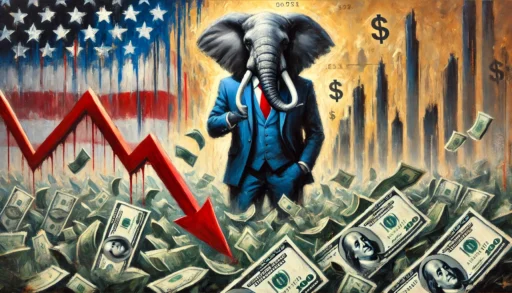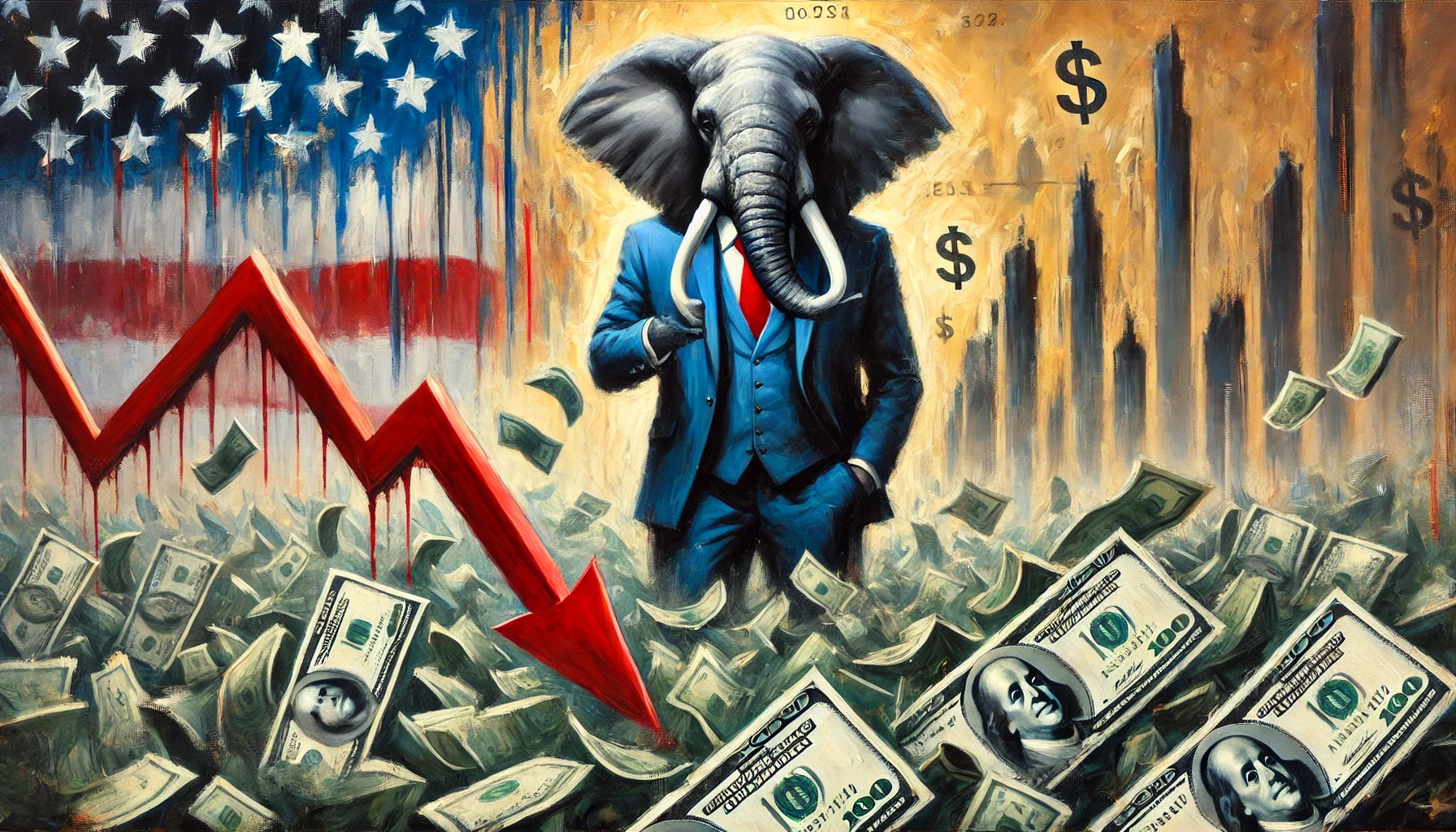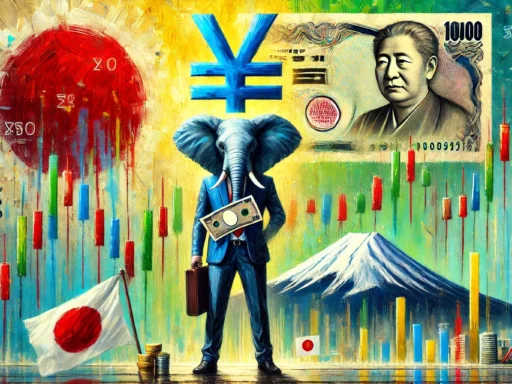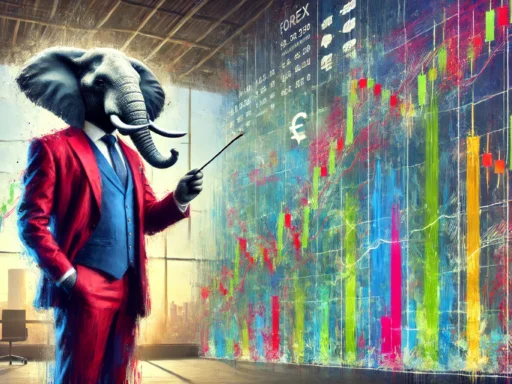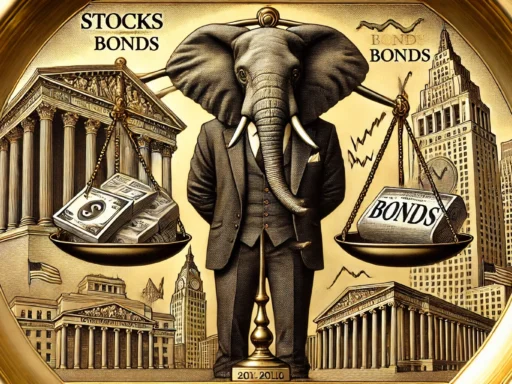Hello Elephants!
The U.S. dollar, one of the most traded currencies in the world, has been through some notable ups and downs in 2024. Recent changes in global financial policies, especially those involving central banks, have caused the dollar to lose value. If you’re in the forex market, these shifts can impact your trades and investment strategy significantly.
Understanding how currency fluctuations work and what drives them is crucial for staying ahead. In this post, we’ll explore the reasons behind the dollar’s recent decline and what it means for forex traders and global markets. So, let’s dive into how central bank decisions and international events have shaped the dollar’s current position.

The Dollar’s Decline and What It Means for Forex
In mid-2024, the U.S. dollar took a noticeable hit, losing value against several major currencies, including the euro, yen, and British pound. For those of you trading forex, this means that buying and selling currencies became a bit more unpredictable during this time. But what caused this decline?
The Role of Interest Rates in the Dollar’s Decline
One of the main factors was a shift in U.S. central bank policies. In September 2024, the Federal Reserve (Fed) cut interest rates from 5.50% to 5.00%. Lower interest rates generally make a currency less attractive to investors because they reduce the return on investments tied to that currency. As a result, the dollar became weaker compared to other currencies like the euro and yen, which were seeing different central bank policies.
This decline in the dollar’s value also had ripple effects across global markets. When currencies fluctuate, it doesn’t just affect forex traders—it can lead to movements in stock markets as well. For example, large investors using what’s called “carry trades” got caught off guard. Carry trades involve borrowing money in a country with low interest rates, like Japan, and investing in another country with higher rates, such as the U.S. When the dollar suddenly weakened against the yen, it forced many of these investors to sell off their U.S. investments quickly to cover their positions, leading to a brief global selloff.
As Kathy Jones from Schwab explains, “The U.S. dollar has declined by about 4% since July against a basket of currencies including the euro, British pound, and Canadian dollar and is now hovering near the low end of a broad trading range that has prevailed since late 2022.” Source.
For a better understanding of how forex works, check out our guide on What is Forex?.
This kind of currency movement is common in the world of forex, and if you’re trading, it’s essential to understand how these changes could affect your strategy. The next sections will explore the deeper reasons behind this shift and what you need to know moving forward.

Impact of Central Bank Policies on the Dollar
One of the biggest factors affecting the U.S. dollar in 2024 has been central bank interest rate policies. In September 2024, the U.S. Federal Reserve (Fed) cut its benchmark interest rate from 5.5% to 5.0%. While a 0.5% change may seem small, even slight adjustments in interest rates can have a large impact on currency values in the forex market.
How Rate Cuts Weaken the Dollar
Interest rates play a crucial role in making a currency more or less attractive to investors. Higher interest rates tend to strengthen a currency because they offer better returns for investors holding assets in that currency. However, when interest rates are cut, like the Fed’s decision in September 2024, it reduces the incentive for investors to hold U.S. dollars, leading to a drop in demand and a weaker dollar.
Rob Haworth, Senior Investment Strategy Director at U.S. Bank, explains it well:
“The fundamental factor contributing to currency trends was about central bank interest rate policy. Earlier in the year, the European Central Bank initiated interest rate cuts, while the U.S. Federal Reserve delayed cuts.” Source.
In contrast to the Fed’s delayed rate cuts, other central banks—like Japan’s and Europe’s—were ahead in adjusting their policies. For example, the European Central Bank started cutting rates earlier in 2024, which created different currency dynamics between the U.S. dollar and the euro. As interest rates in the U.S. fell, the dollar became less competitive, and its value dropped against other major currencies.
For those trading forex, central bank policies are one of the most important factors to watch. Understanding how interest rate changes affect currency pairs can help you make better trading decisions. If you want to dig deeper into analysing these movements, be sure to check out our guide on How to Read Forex Charts.
Japan’s Yen and the Dollar’s Downturn
In 2024, the Bank of Japan made headlines by raising interest rates for the first time in 17 years. This move had a dramatic effect on the yen, which quickly gained strength against the U.S. dollar. But why did this happen, and what does it mean for forex traders?
Japan’s Rate Hike and Its Impact on the Dollar
Japan’s central bank has kept interest rates near 0% for years, making the yen one of the least attractive currencies for investors. However, when the Bank of Japan finally raised rates in mid-2024, it led to a surge in the yen’s value. This sudden rally caught many large investors by surprise, particularly those using a strategy known as “carry trades.”
Carry trades involve borrowing in a low-interest-rate currency like the yen and then investing in higher-yielding assets in another currency, such as the U.S. dollar. For years, this strategy worked well because Japan’s low rates meant cheap borrowing costs. However, when Japan raised rates, the yen appreciated rapidly, reducing the profitability of these trades.
As Rob Haworth from U.S. Bank explains, “Sudden appreciation in the yen affected large investors using ‘carry trades’—borrowing money in Japan to capitalize on low interest rates, then using the funds to buy securities in the U.S. after converting yen to the dollar.” Source.
This unexpected change forced many investors to sell off their U.S. assets quickly to cover their losses, leading to a brief but significant selloff in global equity markets.
Lessons for Forex Traders
For forex traders, this event serves as a reminder that central bank decisions in one country can have far-reaching effects. Japan’s rate hike is a perfect example of how currency fluctuations can disrupt global markets, especially when investors are caught off guard. It also highlights the importance of staying aware of major economic shifts and adjusting your forex strategy accordingly.
If you’re trading forex, keeping a close eye on interest rate changes in major economies like Japan is crucial. Sudden moves can lead to significant shifts in currency values, impacting your trades and overall portfolio.
To better understand how these currency movements work, check out our guide on How to Read Forex Charts. Knowing how to spot trends early can give you an edge when central banks make surprise moves like Japan did in 2024.
How the Dollar’s Decline Affects Global Markets
When the U.S. dollar weakens, it doesn’t just impact forex traders—it has a ripple effect across global markets, influencing everything from stock prices to personal investments. For anyone with overseas holdings, the value of the dollar plays a crucial role in determining returns.
Currency Fluctuations and Global Investments
A weaker dollar can actually benefit U.S. investors with overseas investments, but it also depends on the timing and the markets involved. For example, if you’re investing in the MSCI European Union Index, which tracks stocks in the European Union, changes in the dollar’s value can significantly affect your returns. A stronger dollar means that when profits from overseas investments are converted back into dollars, those returns may shrink. On the other hand, a weaker dollar boosts returns once the currency exchange is factored in.
As Rob Haworth from U.S. Bank explains, “A slightly stronger dollar resulted in a modestly lower net return for a U.S. investor in overseas markets. By contrast, when the dollar weakens compared to the euro, it enhances the net return for U.S. investors after the currency exchange.” Source.
This is why keeping an eye on forex movements is important, especially when you’re investing in global markets. Currency fluctuations can either work in your favour or against you, depending on how exchange rates shift during the period of your investment.
Forex Movements and Personal Finance
For individual investors, understanding how currency trends influence investment returns is key to long-term financial planning. If you’re building a diverse portfolio that includes foreign investments, the strength of the dollar should be a part of your strategy. This is especially true for those aiming for financial freedom and long-term wealth, as currency risks can add or detract from your overall returns.
If you’re thinking about how this ties into your personal finance goals, consider reading our article on Understanding Financial Freedom. By keeping track of currency trends, you can better plan your investment strategy and protect your wealth from unexpected shifts in the global economy.
Future Outlook for the Dollar
Looking ahead, the U.S. dollar faces several potential challenges that could impact its value in the coming years. While the dollar remains the world’s dominant currency, factors such as rising federal debt and global trade tensions may weigh on its strength. For forex traders and investors alike, these issues are important to keep in mind as they could affect the dollar’s future performance.
Potential Headwinds for the Dollar
One of the biggest concerns is the rising U.S. federal debt. As the government continues to borrow more to finance its spending, the U.S. Treasury will need to issue more bonds, increasing the supply of dollars in the market. This could lead to reduced demand for U.S. assets, potentially weakening the dollar over time. Additionally, trade tensions with major economies like China could disrupt global economic stability, further pressuring the dollar.
On top of this, central bank policies will continue to play a significant role. With the Federal Reserve expected to cut interest rates further, the dollar may continue to lose ground, especially against currencies where interest rates remain stable or are rising. While the U.S. economy has historically outpaced other major economies, narrowing yield differentials could reduce the dollar’s appeal.
As David Lubin from Chatham House puts it, “Short of a world war three with the U.S. on the losing side, is there anything that could upend the dollar’s role?” Source. His point highlights that while the dollar faces challenges, its global dominance is unlikely to fade quickly.
What This Means for Forex Traders
For forex traders, the future of the U.S. dollar is filled with both opportunities and risks. Traders need to stay alert to shifts in central bank policies, economic data, and geopolitical developments that can influence the dollar’s value. Since the forex market is always evolving, predicting exact movements can be tricky, but by staying informed, traders can position themselves to make the most of these fluctuations.
As the global financial landscape changes, keeping an eye on these headwinds will help you better navigate the forex market. Understanding how broader economic forces shape currency values will also support your long-term financial strategies. Whether you’re trading forex or simply managing your personal investments, staying informed about the dollar’s future will put you in a stronger position.
In the end, the dollar’s dominance may not be immediately threatened, but fluctuations in its value are likely to continue. For more on how to manage your investments wisely, check out our guide on Understanding Financial Freedom. By keeping a close watch on economic trends, you’ll be better prepared for whatever the future holds in the forex market.

